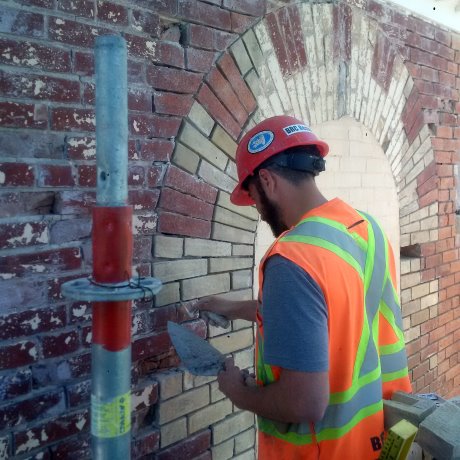The community of Locust Hill is a distant memory in what’s now Markham, Ont. But the Locust Hill School House, built in 1864, continues to remind residents of the area’s history.
Unused and unoccupied for a number of years, the historic structure is being stabilized by BRC Restoration of Concord, Ont. at a contract cost not to exceed $296,000 plus HST.
The property was transferred to the Toronto and Region Conservation Authority (TRCA) in 2004 as part of the development of Rouge Park. The school’s roof, trusses and eaves were replaced in 2013. TRCA tendered the current contract to stabilize the property for future — and as yet unspecified — uses. Additional stakeholders in the development of the site include Parks Canada and the City of Markham.
"The building served as a one-room school house for the community with all grades being taught in a single class," says BRC Restoration vice-president, Arran Brannigan. "At the time it was a very significant structure for Locust Hill."
The schoolhouse, was designed in Classical Revival Style and was built on a rubble stone foundation, in all likelihood local stone cleared from agricultural land by local farmers.
"These were irregularly shaped pieces of stone placed in an excavated foundation and solidified using mortar placed in the voids," says Brannigan. "At grade, the construction shifts to solid masonry walls."
The clay brick used to build the wall of the building is three wythes (layers of brick) thick. The interior of the building includes horizontal notches to allow for the installation of horizontal nailer boards that allowed the addition of lath and plaster.
"The building is in reasonable shape for a structure that predates Confederation," says Brannigan. "But there are structural cracks in the exterior due to age and environment, and cracks and displacement of some masonry units."
Work began in March with gutting of the non-historically significant interior of the building, which had been retrofitted during the 1960s to include a residence on the second floor. Removing the second floor restored the original dimensions of the one-room schoolhouse. Early work by BRC also included removal of coats of paint on the brick exterior.
"We found multiple coats of paint," says Brannigan. "There’s a persistent idea that paint can be used on bricks. However, bricks are porous and part of their function is to ‘breathe.’ Painting traps moisture inside and can cause long-term damage."
He reckons that all of the brick units came from a local supplier, such as the Don Valley Brickworks. The construction features bricks in two contrasting colours, red and yellow, which figure heavily in the creation of ornamental arches made from hand-cut stone.
"However, the brick dimensions offered today aren’t the same as those offered in 1864," he says. "Our intention was to try to reuse as much of the original brick as possible without looking to outside sources for replacement brick. When we removed cracked bricks from the exterior wythe, we were able to go inside the building and at times salvage original bricks from the interior wythes. Since those wythes will remain unseen when they’re ultimately hidden underneath plaster, we could more easily replace them."
Where new bricks were necessary, BRC ordered several skids from a U.K. supplier that continues to make bricks in Imperial sizes that are also similar in colour and finish. These were primarily used on the interior.
"It wasn’t a requirement of the contract to do that," says Brannigan. "But it is considered a best practice when it comes to masonry restoration, so some additional time and effort spent on switching out the masonry units was worth it."
Work on the project peaked at about a dozen workers who specialized in masonry, wood restoration and demolition.




Recent Comments
comments for this post are closed